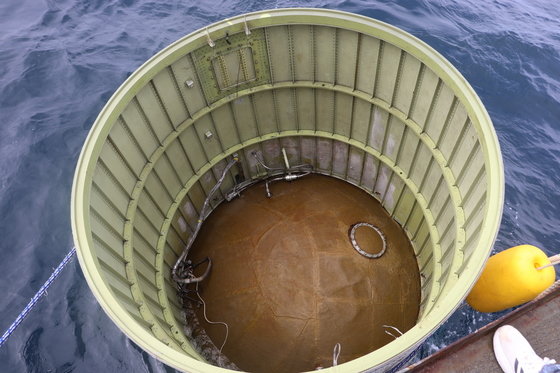Experts analyzed that North Korea’s launch of a military reconnaissance satellite to the south shows its intention to enter low-Earth orbit, especially polar orbit connecting the South Pole and the North Pole.
According to Free Asia Broadcasting (RFA) on the 31st (local time), Bruce Bennett, a senior researcher at the Rand Institute in the US, said that North Korea launched a satellite to the south to put it in low earth orbit, especially in polar orbit.
Low Earth Orbit (LEO) refers to the orbit of an artificial satellite from the ground to an altitude of 2000 km. Polar orbit refers to the orbit of an artificial satellite designed to pass over the Antarctic and North Pole.
Researcher Bennett responded to North Korea’s assertion that this satellite is trying to enter a geostationary orbit (EGO) of about 36,000 km above the ground. Because of this, it was explained that in order to enter a satellite into a geostationary orbit, it had to be launched in an easterly direction.
 The Joint Chiefs of Staff announced on the 31st that the South Korean military identified and salvaged an object presumed to be part of a “space projectile” claimed by North Korea at around 8:05 am in the waters 200 km west of Eocheong Island in the West Sea. It is known that the place where the South Korean naval ship is out is the high seas where the projectile shot by North Korea crashed after an abnormal flight. Eocheongdo is an island located about 66 km west of Gunsan Port in Jeollabuk-do. (Provided by the Joint Chiefs of Staff) 2023.5.31/News 1
The Joint Chiefs of Staff announced on the 31st that the South Korean military identified and salvaged an object presumed to be part of a “space projectile” claimed by North Korea at around 8:05 am in the waters 200 km west of Eocheong Island in the West Sea. It is known that the place where the South Korean naval ship is out is the high seas where the projectile shot by North Korea crashed after an abnormal flight. Eocheongdo is an island located about 66 km west of Gunsan Port in Jeollabuk-do. (Provided by the Joint Chiefs of Staff) 2023.5.31/News 1However, he added that geostationary orbit is not suitable as a reconnaissance satellite because it is difficult for a satellite to photograph the earth’s surface because the altitude is very high.
Dr. Marcus Schiller, a missile expert at ST Analytics in Germany, also argued that North Korea’s launch of a satellite was aimed at placing it in low Earth orbit, especially in polar orbit.
He explained that reconnaissance satellites should be located in low earth orbit closest to the earth, adding that South Korea has 28 satellites in low earth orbit and North Korea has two satellites (KMS 3-2 and KMS 4) in low earth orbit.
He also claimed that the satellite launched this time by North Korea looks like a three-stage rocket, and that it is not certain because the photos have not been released yet, but considering that there are three dangerous areas that North Korea has notified in advance, it seems to be so.
As for the cause of North Korea’s satellite launch failure, he said, “As of now, we do not know anything other than what North Korea announced. It seems that the second stage did not ignite or the first stage was separated and ignited while detonating.”
Dr. Shiller said, “Based on North Korea’s announcement, it is possible that a new engine was used in the satellite-launched rocket.” North Korea previously announced that it launched the military reconnaissance satellite ‘Malligyeong-1’ by mounting it on a new satellite-carrying rocket (rocket) ‘Chollima-1’.
Regarding this, Theodore Postol, an emeritus professor of science, technology and national security policy at the Massachusetts Institute of Technology in the United States, estimated that North Korea may have used the RD-250 engine used in intercontinental ballistic missiles (ICBMs) in the satellite-launched rocket.
The RD-250 is a rocket engine used in Russian intercontinental ballistic missiles. Professor Postol argued that North Korea brought this technology from the collapse of the Soviet Union in the 1990s and is using it for ICBMs and satellite-launched rockets.
He explained, “It is clear that this engine was used during the first stage launch of this satellite rocket.”
Professor Postol, who studied the satellite ‘Eunha-3’ launched by North Korea in 2012, said that while using the RD-250, which North Korea calls ‘Baekdu Engine’, it has the ability to mount objects weighing 800 to 1000 kg on a rocket and put it into low orbit. claimed to have
At the same time, he said, “This satellite launch is to enter low Earth orbit, and North Korea’s technological capabilities are excellent, so it will analyze the cause of the failure and try again soon.”
Source: Donga
Mark Jones is a world traveler and journalist for News Rebeat. With a curious mind and a love of adventure, Mark brings a unique perspective to the latest global events and provides in-depth and thought-provoking coverage of the world at large.